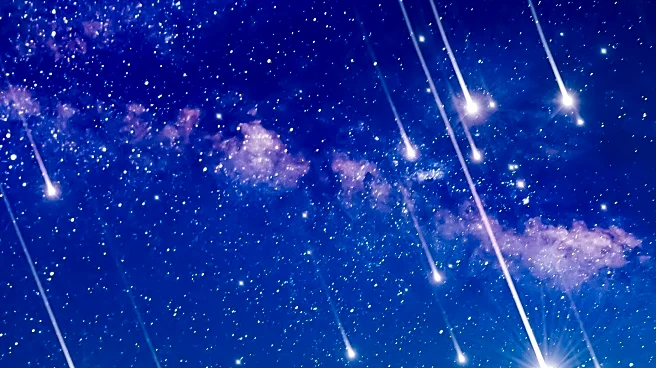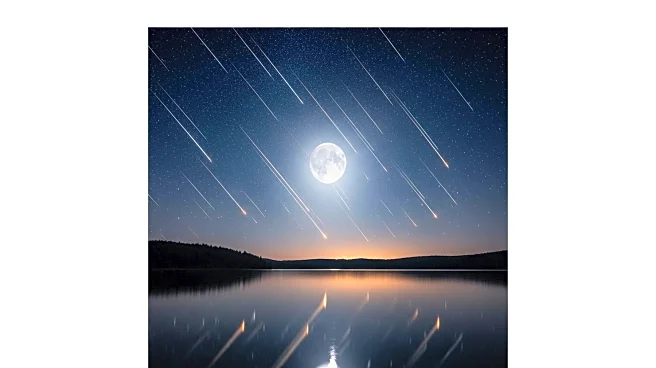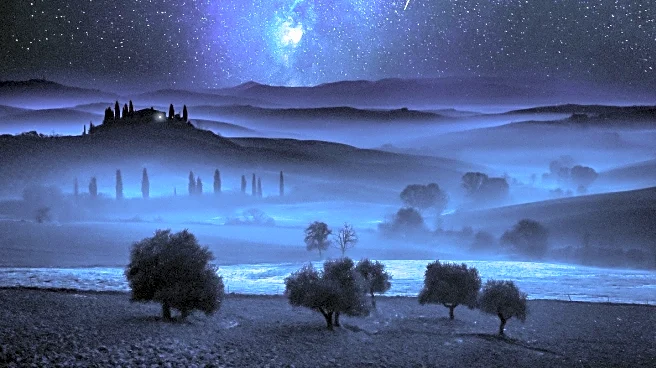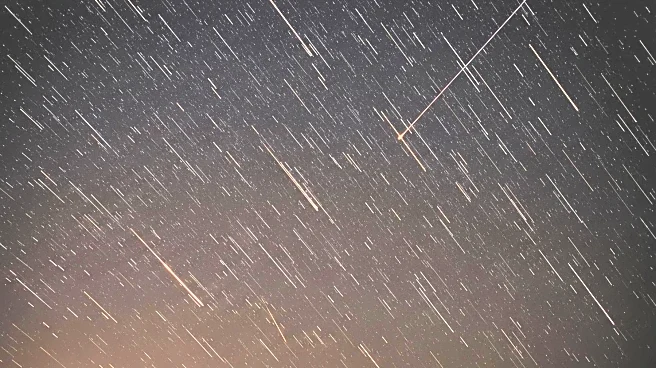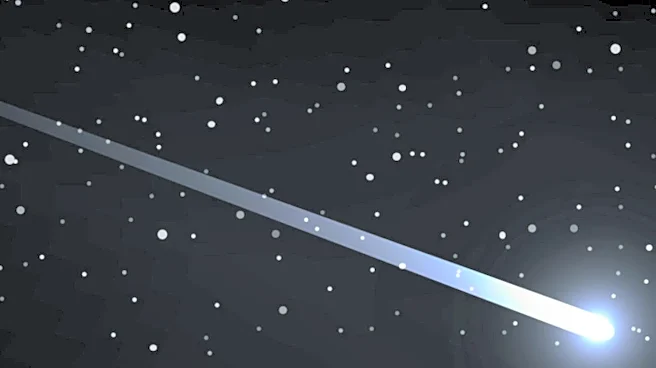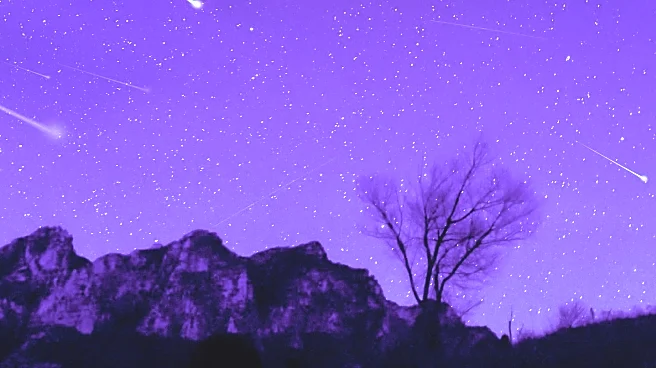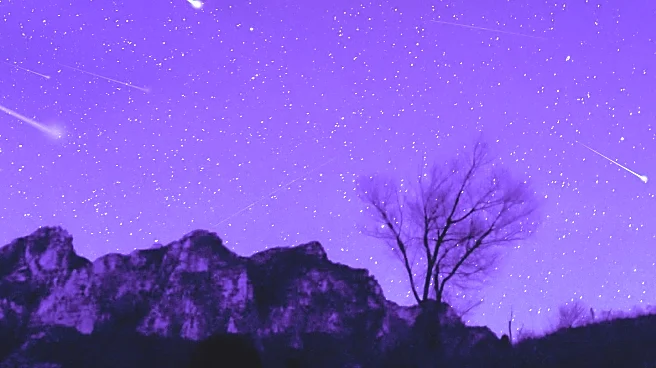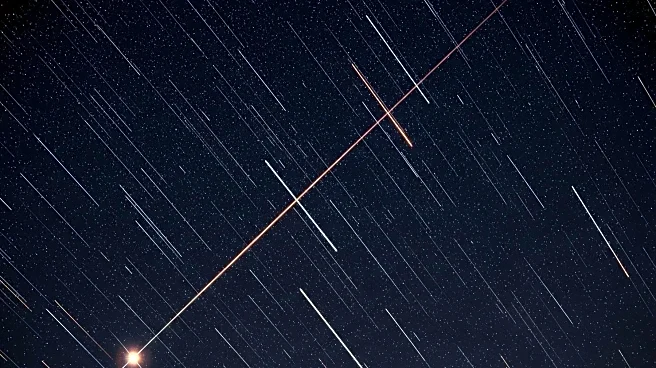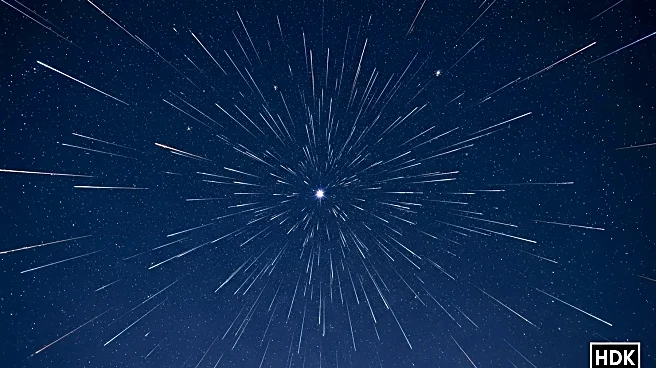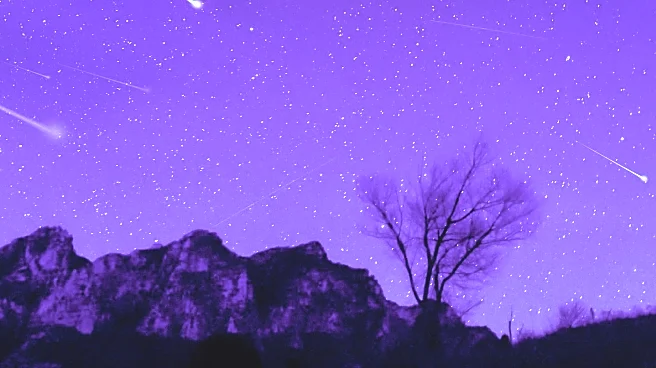What's Happening?
The Draconid meteor shower is set to peak on October 8, providing a natural light show as meteors streak through the sky. This annual event occurs as Earth passes through debris left by comet 21P/Giacobini-Zinner. The shower is active from October 6 to October 10, with the peak expected at 3 p.m. EDT. Observers can expect up to 10 meteors per hour under ideal conditions, although the brightness of the waning gibbous moon may obscure fainter meteors. The meteors appear to originate from the constellation Draco, located near the Big Dipper in the northwestern sky.
Why It's Important?
Meteor showers like the Draconids offer a unique opportunity for public engagement with astronomy and science. They provide a chance for amateur astronomers and enthusiasts to observe celestial phenomena, fostering interest in space exploration and science education. Additionally, meteor showers contribute to scientific understanding of cometary debris and its interaction with Earth's atmosphere, offering insights into the composition and behavior of comets.
What's Next?
Observers are encouraged to watch the skies at sunset on October 8 for the best viewing experience. The event may inspire further interest in astronomy and lead to increased participation in stargazing activities. Scientists may continue to study the debris from comet 21P/Giacobini-Zinner to gain more information about its composition and impact on Earth's atmosphere.
Beyond the Headlines
Meteor showers highlight the interconnectedness of celestial bodies and the dynamic nature of the solar system. They serve as a reminder of the vastness of space and the ongoing processes that shape our universe.

